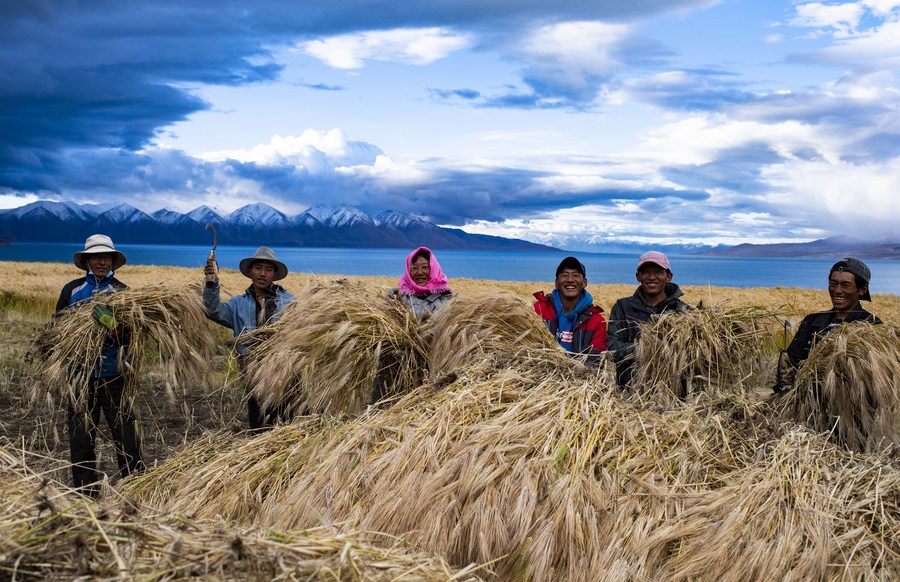
People's livelihoods have continued to improve in the Tibet autonomous region, which has become one of China's fastest-growing regional economies, officials said at the recently concluded 10th Communist Party of China Congress of Tibet.
Around 628,000 impoverished residents in the region's 74 counties and districts were lifted out of poverty between 2015 and last year, and more than 266,000 residents living in harsh, remote, high-attitude areas were relocated to more livable valleys and towns, the congress was told.
Absolute poverty, a problem that had plagued the region for thousands of years, has been eradicated, Wang Junzheng, the newly appointed Party chief of the region, said in a report delivered on Saturday, the opening day of the congress in Lhasa, the regional capital.
The report said that between 2016 and 2020, livelihood improvement in the region was reflected in the employment of college graduates and rural residents.
The employment rate of college graduates was kept above 95 percent, while more than 2.8 million rural farmers and herdsmen were given job opportunities.
The children of rural residents continued to benefit from the region's 15 years of free education from preschool to high school.
"Better healthcare services have been provided to the people, residents' medical expenses in neighboring provinces were reimbursed, and the average life expectancy rose to 72.19 years by the end of 2020," Wang said.
He said that in the next four years, the region will continue to enhance people's livelihoods, keep its annual GDP growth rate above 8 percent, and work hard to see rural disposable incomes rise by more than 8 percent during the 14th Five-Year Plan (2021-25) period, and those in urban areas rise by more than 10 percent.
"We will try to maintain the region's leading role in economic growth in China, and strive to make the region take a lead in terms of high-quality economic development in China's plateau regions," Wang said.
Lhamo Drolma, a 30-year-old resident of Lhokha, a city south of Lhasa, said she is happy to live in a society with better infrastructure and medical and education services.
"In recent years, my fellow villagers have benefited from the region's poverty reduction efforts, and various changes have taken place in our lives-from our diet to transportation," she said.
"All my family members are covered by basic medical insurance. When we get sick, we can either go to the traditional Tibetan hospitals or other hospitals. Medical care has been upgraded with more convenient services and more qualified medics available.
"We also have more consumption choices. Unlike in the past, when we had inadequate clothing and food, we now enjoy multiple choices of daily necessities."
The per capita disposable income of rural residents saw double-digit growth during the previous five-year plan, reaching 14,598 yuan ($2,291) last year, while the region's GDP grew by an average of 9 percent a year over the period.





